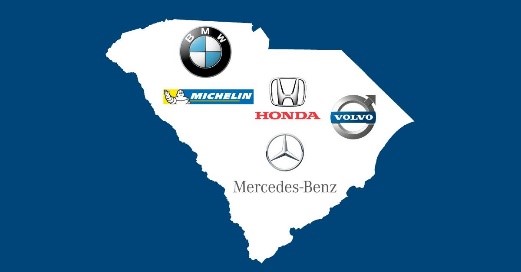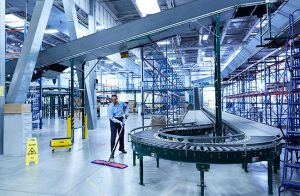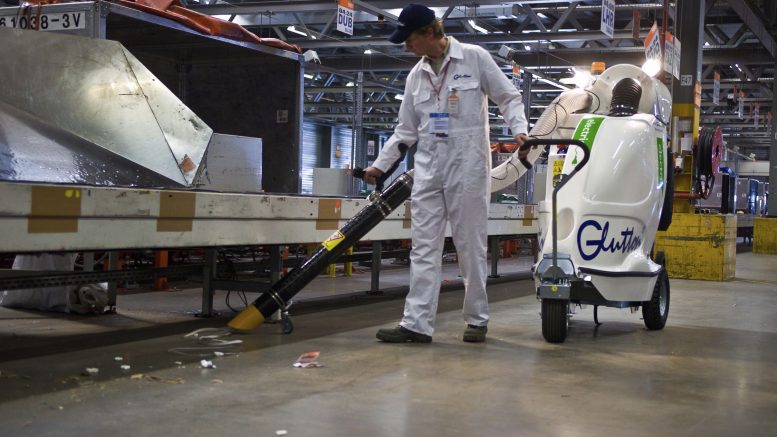So…You want to become a tiered supplier? You want to fly beyond the “mom and pop” machine shop and onto the radars of a BMW, Boeing or Michelin?
Well, you’ll need to start making your own bed first.
In addition to a more aesthetically pleasing facility, a “clean” work environment is vital to implementing Just in Time protocol, OSHA-compliant safety standards and work flow efficiencies needed to meet the high demands of large manufacturers.
I’m not saying you need to eat off the floor, but suppliers to South Carolina’s array of global brands in the automotive and aerospace sectors maintain exceptional housekeeping standards to sustain their relationships with the powerful OEM’s.
But don’t take my word for it.
Murat Aksel, BMW’s Senior Vice President of Purchasing and Supplier Network Americas put it plainly, saying the company’s “suppliers must meet high performance levels in quality, flexibility, cost and innovation.”
“And this includes maintaining a clean facility,” he said. “Keeping the production floor clean, neat and organized is a basic requirement to supply parts for BMW.”
And to the struggling machine shop implementing these standards, the reward is delightfully, double-edged. Not only is it the initial rung up the supply chain ladder, it can improve your existing profile to the potential customers coming in your doors every day.
Guy Luksic, owner of Jantize UpState and someone with 20 years’ experience in the manufacturing industry ranging from Production Manager to VP of Operations, makes the connection, suggesting a “clean”, organized and bright manufacturing facility speaks volumes to customers.
“Customers want to know a manufacturer can consistently produce a quality product,” he said. “A clean facility must become the culture of the company.”
And if you think the production floor of a tiered automotive supplier is tidy, you should check out their counterparts in aerospace popping up around the state since Boeing arrived. (Of course, a mechanical default related to cleanliness in the manufacturing process of an aircraft is of greater importance than automotive due to the resulting catastrophic differences should a malfunction occur once the plane or car is in use.)
Paul Kumler, President of KTM Solutions in Greenville and former Boeing and Lockheed director of engineering agrees, pointing to “cleanliness” in aircraft construction as a value greater to safety rather than its relation to production and the bottom line.
Foreign Object Debris (FOD) in airport operations or during aircraft construction can cause mechanical failures and impact a flight’s safety down the road, he said. “A clean and well-organized environment is not only leaner, it will enable a safer environment for employees during the manufacturing process and for passengers enjoying the finished product in the air or on the road.”
Data complied by the Bureau of Labor Statistics shows slips, trips and falls are the most common accidents in a manufacturing facility.
And although we’d all love to move up the supply chain and fatten the bottom line, there is something more important at stake.
“The number one advantage to having a clean manufacturing facility is safety,” Luksic said.
“The goal is to send everyone home in the same condition or better when they walked in.”
 Whether the floor is wet from spilled coffee or a machine leaking fluid, whether there is scattered debris or piles of wasteful inventory in the work path, falling can cause serious injuries to a worker and cost a company millions of dollars.
Whether the floor is wet from spilled coffee or a machine leaking fluid, whether there is scattered debris or piles of wasteful inventory in the work path, falling can cause serious injuries to a worker and cost a company millions of dollars.
Don Snizaski, CEO of Life and Safety Consultants Inc., helps dozens of manufacturers across the state and region meet OSHA’s safety requirements.
“Safety hazards related to cleanliness and housekeeping are frightfully common in this sector,” he said. “When conducting an audit, we pay special attention to clean dry floors, clear walkways and unobstructed access to exit doors and fire extinguishers.”
And so, on any level, “cleanliness” in the manufacturing processes of South Carolina’s supplier network will demand a change in your business hygiene, should you need it? If you want to ensure the safety of your employees, improve work flow, speed up production schedules and move up the supply chain, you’ll start each day with a little quality housekeeping and by making your own bed first.
For more information on getting your manufacturing facility clean and organized and ready for business contact Guy Luksic at Jantize UpState today!



Be the first to comment on "Hanging it on housekeeping; The first step in supply chain progression and safety"